Paris is a city with a lot of charm. There are beautiful historical buildings famous all over the world, lots of great restaurants with delicious food and very good traditional bakeries offering a large scale of homemade goodies. Despite this, the overall look of the city isn’t as uniform as one might think. Every Parisian district is somehow unique and offers to the visitor a world full of particular architecture, culture and street life. This article will present you with a tiny piece of the big Parisian mosaic – the historical district, le Marais, that connects aristocratic architecture, Jewish history and gay culture.
A bit of history

Le Marais, which in French means a swamp, is a historical part of Paris spread over the 3rd and 4th arrondissement, on the north side of Seine riverbanks. The old marshy zone was settled in the 12th century by religious orders. For a long time, the district was at the edge of public interest. It gained importance in the 17th century when Parisian aristocrats moved there, because of the construction of elegant palaces and buildings. After the French revolution in the18th century, the aristocracy left and the district became the centre for artists and craftsmen. During the last one hundred years, it has seen an influx of Jewish immigrants from all over the Europe. The Jewish community occupies Rue des Rosiers and its surroundings. During the last decades, an alternative and active gay community have also settled in le Marais.
The Municipal House

The best place to begin your tour of le Marais is surely at the metro station Hôtel de Ville that lets you out directly in front of the stunning Hôtel de Ville, which is a city administrative building. It is a huge, white-grey palace in the Renaissance style. The origins of the Hôtel de Ville go back to 14th century when Etienne Marcel, the provost of Parisian merchants, gained it for the municipality. In 1533, reconstruction of the palace began under the supervision of Italian architect Boccador (Domenico de Cortona). Nowadays, Hôtel de Ville is the biggest Municipal House in Europe. In addition to its administrative function, it is also a place of art and culture. There are many interesting expositions inside the Hôtel de Ville as well as in the square in front of the building. There are often concerts, festivals and funny sports activities. In December, there is a great ice skating rink. Just ask yourself, when in your life you could skate in front of one of the most important Parisian buildings?
Alternative boutiques and bars

After visiting the Hôtel de Ville, it is time to discover the interesting surroundings. Just cross Rue de Rivoli and continue your way to Rue du Temple. On your right, you’ll see an old shopping centre with Art Nouveau architecture. Behind it, you’ll find a labyrinth of narrow streets with alternative bars, small boutiques with hand-made jewellery and original dresses, as well as many good chocolate shops. Visit some of them and buy a unique skirt or bag as a souvenir or gift. Diwali, a boutique on Rue du Temple, has really beautiful stuff to try. Their ethnic earrings or colourful scarfs are a real a must-have! In addition to these unique boutiques, there are also popular spaces for the large gay community to learn or hang-out. Here you’ll find libraries that focus on LGBT issues and lifestyles as well as gay bars. There is also one great bakery owned by a nice gay couple called Legay Shock at 45 Rue Sainte-Croix de la Bretonnerie. Their sandwiches are really delicious (try the one with chicken seasoned with a slightly spiced tex-mex sauce and you won’t be disappointed!), but they are known for creating a special bread that is popular among tourists!
You might be interested in these Airbnbs!
Rue des Rosiers and Jewish traditions

An alternative, young culture isn’t the only one that you’ll meet in le Marais. If you continue your way to Rue des Rosiers, you reach the Jewish part of the district. Instead of bars and creatives, you’ll find yourself in the middle of an enormous number of traditional Jewish grocery stores and restaurants. There are tasty falafel stands (it is said that they’re the best in Paris), as well as great bakeries offering Jewish delicacies. Visit some of them to eat cheesecake or taste a piece of their juicy apple pie. If you’d like something more unusual, try the delicious pie with filled with poppy seeds. Even if all the bakeries are great, there are three that you should not miss – Korcarz on 29 Rue des Rosiers, the yellow Sacha Finkelsztajn that is just next to it, and Florence Kahn on 24 Rue des Ecouffes.
Aristocratic heritage

If you continue along Rue des Ecouffes, you’ll reach the main boulevard, Rue de Rivoli. Turn right onto this street and you’ll soon arrive at Saint Paul Square that is the epicentre of the district’s life. This crossroad connects two main boulevards – Rue de Rivoli and Saint-Antoine and it acts as a meeting point for many people. On the square, you’ll find tiny grocery shops, traditional bakeries, as well as brasseries. Actually, the square was named after the beautiful Saint-Paul-Saint-Louis Church that embellishes the corner of the square. The Saint-Paul-Saint-Louis Church was built in the 17th century by Jesuit architects Étienne Martellange and François Derand on the orders of Louis XIII of France. The surroundings of Saint-Paul-Saint-Louis are interesting also for architectural heritage from the aristocratic period. The most iconic place is surely Vosges Square, famous for its perfectly symmetric shape. In fact, it is the oldest planned square in Paris. It was built in 1612 inside the complex of buildings of an old aristocratic palace called Hôtel des Tournelles. This square-shaped building with red bricks and stone arcades enchants the viewer with its perfection and is home to many chic restaurants and fancy cafes. The best ending to your visit is to have a cup of delicious hot chocolate in one of them.
Let’s visit le Marais
Le Marais is an old Parisian district situated on the north riverbank of the Seine River. It is an extremely colourful area that unites a variety of cultures. Discover the richness of this mix in more detail by visiting le Marais!
History
Get Trip101 in your inbox
Unsubscribe in one click. See our Privacy Policy for more information on how we use your data






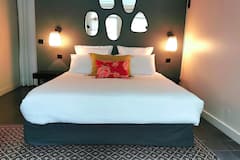
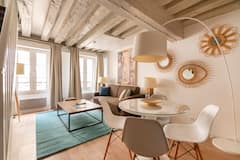
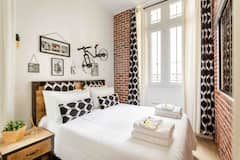
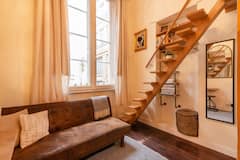
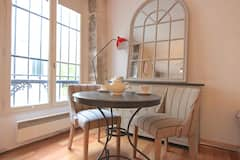









Create an account to